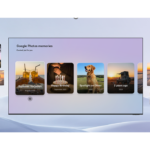According to a new study by Lenovo and Google, two-thirds of students are more likely to regularly receive help in class and with their homework with technology in place. This also applies to extending help in class and for homework by teachers and peers. Going by the same study, online learning provides a positive teaching and learning impact on both students and teachers, indicating immense opportunity for digital-based learning modules in school.
The study, conducted with two Grade 8 classrooms and 16 teachers from Sekolah Menengah Kebangsaan Jalan Empat (SMK Jalan Empat), aims to understand how schools can adopt technology and the benefits technology brings. The study was supported by a team of trainers from Eduspec (a leading Malaysian professional development firm), and academics from Universiti Kebangsaan Malaysia endorsed by Deputy Vice-Chancellor Prof Dr. Dato’ Norazah Nordin.
“As we return to normalcy, and with schools reverting to in-person lessons, educators must rethink learning experiences for students. At Lenovo, we believe that transforming education is critical for society’s development. By providing smarter technologies that engineer smarter classrooms for students, we can prepare students for the future workforce that is digital-first. Lenovo is committed to equipping schools with the right tools and solutions to provide a positive impact along the student and teacher journey,” said Khoo Hung Chuan, General Manager & Director, Education Transform and Development, Lenovo Asia Pacific.
Collaboration, creativity, and visual aid are advantages of digital-based learning
There was a notable increase in student collaboration with the introduction of Google Workspace for Education (GwfE). 75% of teachers agreed that GwfE solutions encouraged students to communicate more with their classmates such as through the chat feature in Google applications. This allowed students to have real-time discussions during lessons. 88% of teachers agreed that students were seen to be more creative and imaginative with their work through the GWfE. “They [students] would use Google slides and they would put all sorts of things in the slide to make it interesting. Sometimes they would put videos. It’s really interesting,” said an SMK Jalan Empat Teacher*.
The benefits of technology for engagement and enjoyment were visible in all subjects including those of a more conventional and historical nature. For example, in Islamic studies, students used Google maps to assess how the distance traveled would impact prayer timing and schedules.
The use of GWfE also enables classes to be more visual and interactive, especially for STEM lessons. Teachers can provide a visual description for students to understand the subject matter better such as by using images, audio, videos, and other Google apps. One of the teachers* at SMK Jalan Empat shared, “I would put a picture of the human organ (since I am teaching Science), and the students would label the parts of the organ.”
Positive social impact on students – even shy students can participate confidently
According to the study, 88% of teachers agree that the use of GWfE solutions increases students’ confidence to participate actively in class. Creating a collaborative environment can be a challenge for teachers if students are shy. Teachers found that the features within GWfE empower their students to initiate and participate in classes with ease
“Students can simply raise their hands without turning the microphone on to show participation. I think it encourages shy students to participate. This [raise hand] feature really helps teachers to encourage students to interact and manage the classroom better.” said an SMK Jalan Empat Teacher*.
100% of teachers agreed that students have become more confident in expressing their ideas and are able to present their thoughts in a visually attractive way. With the usage of features such as Jamboard, even [shy] students who take time to warm up and participate during face-to-face lessons are seen contributing without teachers having to call them.
With Chromebooks, classrooms are boundless and become more student-centered
Both students and teachers felt that Chromebooks are fitting as an educational device. Students found that Chromebooks were suitable for them as an educational device in supporting them with scholastic activities such as completing homework, classroom research, collaborating for lessons, creative work, and problem-solving. Teachers on the other hand found that Chromebooks were better suited for students during problem-solving activities in class and to maintain focus during learning tasks as compared to tablets. 100% of teachers agree that the use of Chromebooks and GWfE allows students to develop a better understanding of subjects through their own research and allows students to absorb the core subject matter more quickly. 94% of teachers agree they help students to perform better at their studies in general, along with helping students to complete assignments quicker.
Students also preferred Chromebooks over tablets for completing homework and finding information in class. They had a much lower association of Chromebooks for recreational gaming whereas tablets and smartphones were rated higher. “Chromebooks allow me to have study sessions with friends at any time to discuss school matters,” said an SMK Jalan Empat Student*.
The Lenovo 300e Chromebook Gen 3 deployed to students and teachers is designed to MIL-SPEC-810H and Lenovo EDU Spec standards, with features such as 360-degree rubber bumpers, reinforced ports, and hinges, improved mechanically anchored keys, and impact-tested touchpads. The device is also equipped with improved water-resistant keyboards (now, up to 360 ml) and the laptop display is made from CORNING® GORILLA® GLASS.
Schools don’t have to worry about scratches on the displays as it is made from tough-as-nails CORNING® GORILLA® GLASS. With tough specs, students and teachers will not have to worry even in the event of an accident.
“The Chromebook is a lightweight, convertible device that is purpose-built with the versatility and power to help students learn in and out of the classroom. The features allow for parents and teachers to be at ease with their children and students handling their laptops while encouraging limitless learning wherever, whenever,” shared Khoo Hung Chuan.
Teachers are also reaping the benefit of digital-based learning
Technology has made core teaching activities more efficient for teachers. 100% of teachers said that GWfE solutions have helped them save time in lesson planning, grading, and teaching itself. Teachers are also saving time on non-teaching activities such as general admin work and school management,
56% of these teachers shared that the systems introduced saved their time by 1-5 hours per week. With the extra time saved, teachers have more opportunities to personalize the learning experience for students such as finding ways to make their classes more interesting.
Digital-based learning needs to be a long-term commitment for schools to truly see the benefits
Many schools have adopted technology as a response to the pandemic. While there are positive attributes observed through the pilot study, students and teachers will only be able to truly reap the benefits of digital-based learning when it is a long-term commitment from industry leaders and educators.
The way students learn will continue to evolve and technology will open a world of endless possibilities for them. To ensure that students are prepared for the future workforce, they must be trained to be digital-first and it starts with the introduction of digital-based learning in school.
You can read the full results of the study here.














